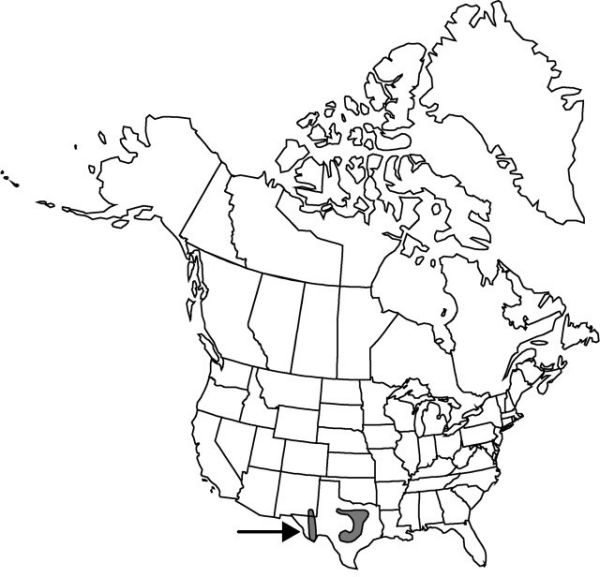Difference between revisions of "Hexalectris nitida"
J. Arnold Arbor. 25: 81. 1944.
FNA>Volume Importer |
FNA>Volume Importer |
Revision as of 21:39, 16 December 2019
Stems pinkish, pale red, or brown-purple, 10–32 cm; sheathing bracts 3–5. Inflorescences: floral bracts ovate-oblong to lanceolate, 3–7 × 3 mm. Flowers 6–24, pedicellate; sepals and petals spreading and recurved, cleistogamous to chasmogamous; dorsal sepal narrowly oblong-elliptic, 8–13 × 3–4.5 mm, apex obtuse; lateral sepals obliquely elliptic to oblanceolate, rounded, slightly falcate, 7–12 × 3–4.5 mm; petals obovate to oblanceolate, falcate, 8–11 × 2–3.5 mm, apically rounded; lip shallowly 3-lobed, 7–11 × 4–8 mm, middle lobe suborbiculate, pink to purple, lateral lobes 1/3 length of middle lobe; minimal lamellae or slightly raised veins 5 or 7, near base of middle lobe, mostly obscured apically; column white, 6–8 mm; anther yellow. Capsules 15 × 5 mm.
Phenology: Flowering Jun–Aug.
Habitat: Moist canyons in oak-juniper-pinyon pine woodlands growing in humus, often in decaying juniper needle litter
Elevation: 200–1500 m
Distribution

N.Mex., Tex., Mexico.
Discussion
The Texas plants occur in the Chisos and Glass mountains, on the eastern and southern Edwards Plateau, and in the Dallas area. Most of the plants on the Edwards Plateau appear to have cleistogamous flowers, and only occasionally display open flowers (J. Liggio and A. Liggio 1999). Plants of Hexalectris nitida examined from the United States have been self-pollinating because of a reduced rostellum. In central Texas, in particular, flowers of this species are cleistogamous. They also are found under Juniperus in that area (V. S. Engel 1987) and flower well after ample late–spring rain.
Selected References
None.